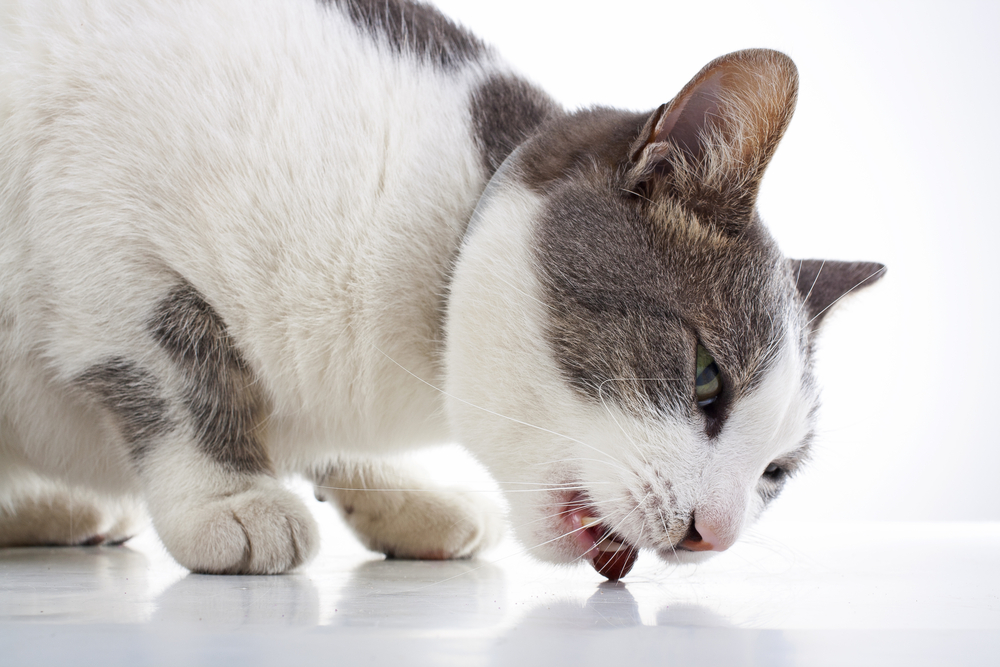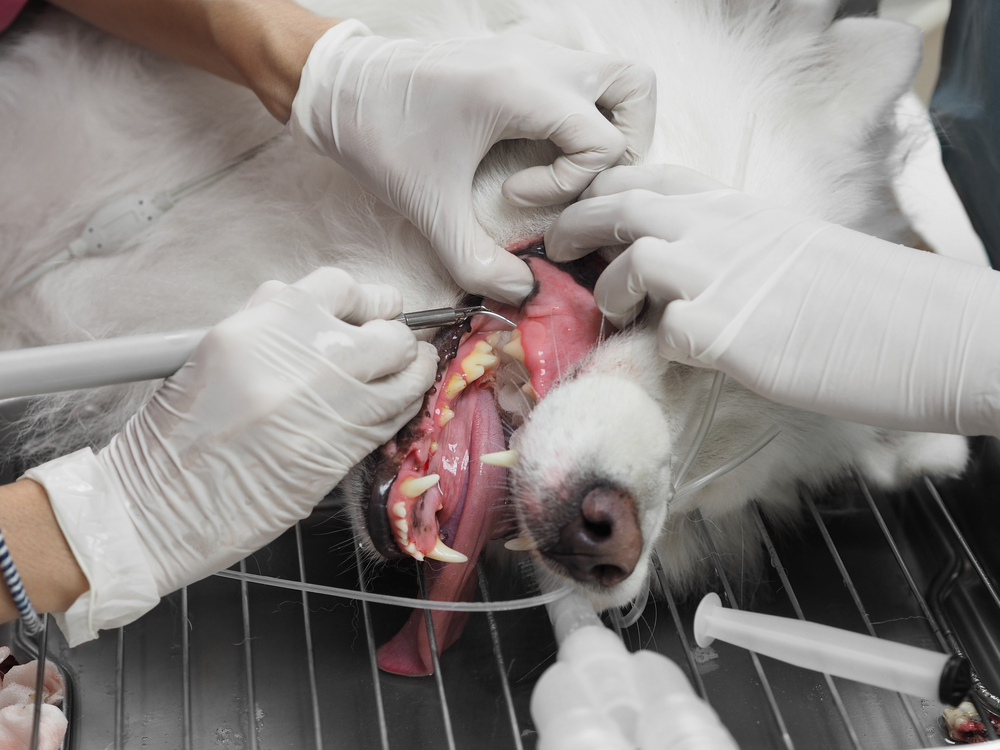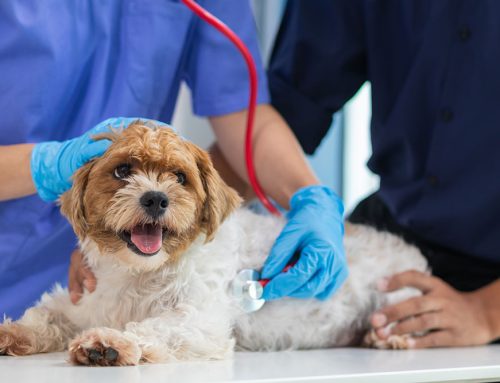When you go to the dentist, you have to follow a lot of directions—open and close your mouth, bite down, turn your head, spit. Plus more instructions if you’re squeamish—hold still, stop moving, calm down, and so on. So, what does your pet’s teeth cleaning look like? What exactly takes place during a veterinary dental cleaning at Liberty Veterinary Hospital?
In honor of National Pet Dental Health Month, we go behind the scenes, to show you what’s involved in our professional pet dental cleanings.
Safe anesthesia—less pet stress, better dental success
For most pet owners, anesthesia is the primary reason for postponing an annual pet dental. However, general anesthesia may seem frightening, but is necessary for a stress-free, safe dental. Liberty Veterinary Hospital is committed to patient safety, and practices only the highest anesthetic care standards. Key features of your pet’s anesthetic experience include:
- Pre-anesthetic physical exam — On the morning of your pet’s dental, the veterinarian performs a thorough physical exam to confirm your pet’s health.
- Pre-anesthetic blood work — Blood work ensures your pet’s internal health and confirms kidney and liver function, essential for metabolizing anesthesia.
- Tailored drug protocol — Anesthesia isn’t one-size-fits-all. Our veterinarians customize medications based on your pet’s species, breed, age, and health.
- Pre-medication — Before general anesthesia, pets receive medication to help them relax. This reduces the anesthesia level needed during the procedure, making the process safer.
- Intravenous (IV) catheter — An IV catheter allows medication and fluid delivery, and provides secure access to a vein in the rare event of an emergency.
- Continuous monitoring — From start to finish, your pet is connected to electronic monitoring equipment to measure their blood oxygen, heart and respiratory rate, blood pressure, and temperature. In addition, they are under the careful watch of a veterinary technician dedicated to monitoring their anesthesia and comfort. The veterinarian is close by throughout the process, and will be alerted to any change in your pet’s vitals or wellbeing.
Dental X-rays—looking below your pet’s gumline
Dental X-rays are instrumental in effectively identifying and addressing periodontal disease in pets. Like the tooth itself, periodontal disease lives mostly below the gum, and this lack of visibility allows progress to go unchecked, damaging tooth roots, and creating pain, infection, and inflammation. For example, many aging pets suffer bone loss around the tooth roots that causes painful tooth mobility, and that can easily go unrecognized without X-rays. Cats can develop resorptive lesions, similar to human cavities, under the gumline that are extremely painful.
Once your pet is anesthetized, they are carefully positioned for full-mouth dental X-rays. The veterinarian then reviews these X-rays in preparation for the oral health examination, to form a fuller picture of your pet’s dental health. For an illustration of what X-rays can show compared with the naked eye, check out this resource from the American Veterinary Dental College.
Scaling and polishing—your pet’s pearly whites
The cleaning portion of your pet’s dental first involves scaling, which is the careful and detailed removal of plaque and calculus (i.e., visible tartar) from the tooth crown, as well as below the gum line. Our state-of-the-art dental instruments are designed to effectively break away damaging bacterial buildup, while protecting the tooth’s surface.
After thorough scaling, each side of every tooth is polished to remove microscopic grooves that are unavoidably created during scaling. Polishing seals and smooths every surface, creating a barrier to deter bacteria accumulation.
Full oral cavity exam—mapping your pet’s mouth
The awake dental exam that is made during your pet’s wellness visit is brief, at best. Many pets object to their mouth being manipulated, whether or not they are in pain. During the oral cavity exam under anesthesia, your pet is fully relaxed, allowing full evaluation of each tooth in the upper and lower jaw, as well as surrounding soft tissue, such as the tongue, soft palate, and upper airway. Each tooth is recorded on a dental chart and assessed for damage or gingival pockets (i.e., gaps between the tooth and the gum) that indicate periodontal disease. Our veterinarian uses these findings, along with your pet’s X-rays, to formulate a treatment plan, if necessary.
Extractions and surgery—getting to the root of your pet’s pain
Your pet’s veterinarian will recommend tooth removal or other treatments as needed. Once you approve the treatment plan, your pet will be prepared according to the treatment location and nature.
Perioperative pain management is a cornerstone of dental care at Liberty Veterinary Hospital. In addition to light pain medication given prior to anesthesia, pets who need extensive oral procedures will be anesthetized locally (i.e., a nerve block) to numb the area where pain-inducing work will be performed. After ensuring your pet is at the appropriate anesthetic level and the nerve block is effective, the veterinarian will move forward with the procedure.
Road to recovery—taking care of your post-dental pet

When you return for your pet’s discharge appointment, we’ll go over everything you need to know about what took place, and what to expect going forward.
- Dental cleaning only — We’ll recommend methods for continuing your pet’s oral care at home, including proper toothbrushing, dental diets, chews, dental wipes, and tartar-control granules that can be added to your pet’s regular diet, to decrease plaque and tartar buildup.
- Cleaning with extractions or surgery — The veterinarian or a veterinary technician will review your pet’s extractions or incision, explain how to give your pet’s pain medication or antibiotics, advise you to feed only soft foods, and schedule a follow-up appointment to ensure proper healing.
When you see what a professional veterinary dental cleaning involves, you can easily see why pets may have a hard time following directions. Fortunately, you—their loving owner—can make the call, and choose to be proactive about your pet’s dental health. To schedule your pet’s dental consultation, contact Liberty Veterinary Hospital.








Leave A Comment